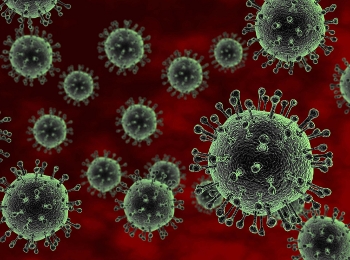| Description | Participants | Agenda | Summary | Products |
|---|
NIMBioS Investigative Workshop
Interface Disease Models

Topic: Modeling disease transmission at the interface of wildlife, livestock, and poultry populations
Meeting dates: March 11-13, 2014
Location: NIMBioS at the University of Tennessee, Knoxville
Organizers:
Kate Huyvaert, Fish, Wildlife, and Conservation Biology, Colorado State University, Fort Collins, Colorado
Paul Cross, U.S. Geological Survey, Northern Rocky Mountain Science Center, Bozeman, Montana
Kelly Patyk, USDA/APHIS/Veterinary Services, Centers for Epidemiology and Animal Health, Fort Collins, Colorado
Daniel Walsh, U.S. Geological Survey, National Wildlife Health Center, Madison, Wisconsin
Objectives: Simulation models are useful tools for exploring complicated systems and informing management decisions when historical data may be limited. Infectious disease models have a long history in human epidemiology, but only more recently have been applied to domestic or wildlife host species. These models offer a way to test response plans, evaluate detection methods, identify effective methods to mitigate disease, and answer policy questions. Many diseases of animal health concern occur in both free-ranging wildlife and domestic populations. Diseases such as tuberculosis and brucellosis are present in both populations in the United States and have been transmitted between populations, complicating disease control. In addition, assessing transmission among species, either qualitatively or quantitatively, has a number of complex challenges. Animal health professionals are also concerned about the consequences of introduction of pathogens that are not present in the United States, such as viruses that cause highly pathogenic avian influenza, foot-and-mouth disease, and classical swine fever. Given that many diseases of current and future concern have both wild and domestic animal components, a need exists to understand the strengths and weaknesses of current modeling frameworks to capture the dynamics both within and, importantly, between wild and domestic hosts. Enhanced collaboration across institutions and among biologists, modelers, and veterinarians is needed to reduce the risks posed by animal-related diseases. Through this workshop, we sought to develop a better understanding of the availability and utility of different kinds of modeling approaches as well as the data to answer complex questions.
Interface Disease Models WordPress Site
Presentations were available for viewing via live streaming during the workshop.
 Summary Report.
An interdisciplinary group of veterinarians, biologists, epidemiologists, statisticians, and mathematicians gathered to evaluate the gaps and challenges in modeling pathogen transmission at the interface between free-ranging wildlife populations and livestock and poultry populations. A central focus of the workshop was to identify gaps in modeling transmission in four high importance interface disease systems including foot-and-mouth disease, tuberculosis, highly pathogenic avian influenza, and classical swine fever. Through a combination of targeted presentations from both mathematical and biological standpoints and open discussion, several common gaps were identified including: the need to 1) better link biological data with modeling approaches, 2) exploit new advances in modeling to "marry" mechanistic mathematical with statistical frameworks when examining disease systems, and 3) develop an understanding of the importance of peridomestic species in wildlife-livestock diseases. Several interdisciplinary collaborations and model-based projects emerged as products of the workshop.
Summary Report.
An interdisciplinary group of veterinarians, biologists, epidemiologists, statisticians, and mathematicians gathered to evaluate the gaps and challenges in modeling pathogen transmission at the interface between free-ranging wildlife populations and livestock and poultry populations. A central focus of the workshop was to identify gaps in modeling transmission in four high importance interface disease systems including foot-and-mouth disease, tuberculosis, highly pathogenic avian influenza, and classical swine fever. Through a combination of targeted presentations from both mathematical and biological standpoints and open discussion, several common gaps were identified including: the need to 1) better link biological data with modeling approaches, 2) exploit new advances in modeling to "marry" mechanistic mathematical with statistical frameworks when examining disease systems, and 3) develop an understanding of the importance of peridomestic species in wildlife-livestock diseases. Several interdisciplinary collaborations and model-based projects emerged as products of the workshop.
Publications
Huyvaert K, Russell R, Patyk K, Craft M, Cross P, Garner M, Martin M, Nol P, Walsh D. 2018. Challenges and opportunities developing mathematical models of shared pathogens of domestic and wild animals. Veterinary Sciences 5(4):92. [Link]
NIMBioS Investigative Workshops focus on broad topics or a set of related topics, summarizing/synthesizing the state of the art and identifying future directions. Workshops have up to 35 participants. Organizers and key invited researchers make up half the participants; the remaining participants are filled through open application from the scientific community. Open applicants selected to attend are notified by NIMBioS within two weeks of the application deadline. Investigative Workshops have the potential for leading to one or more future Working Groups. Individuals with a strong interest in the topic, including post-docs and graduate students, are encouraged to apply. If needed, NIMBioS can provide support (travel, meals, lodging) for Workshop attendees, whether from a non-profit or for-profit organization.
A goal of NIMBioS is to enhance the cadre of researchers capable of interdisciplinary efforts across mathematics and biology. As part of this goal, NIMBioS is committed to promoting diversity in all its activities. Diversity is considered in all its aspects, social and scientific, including gender, ethnicity, scientific field, career stage, geography and type of home institution. Questions regarding diversity issues should be directed to diversity@nimbios.org. You can read more about our Diversity Plan on our NIMBioS Policies web page. The NIMBioS building is fully handicapped accessible.
NIMBioS
1122 Volunteer Blvd., Suite 106
University of Tennessee
Knoxville,
TN 37996-3410
PH: (865) 974-9334
FAX: (865) 974-9461
Contact NIMBioS


